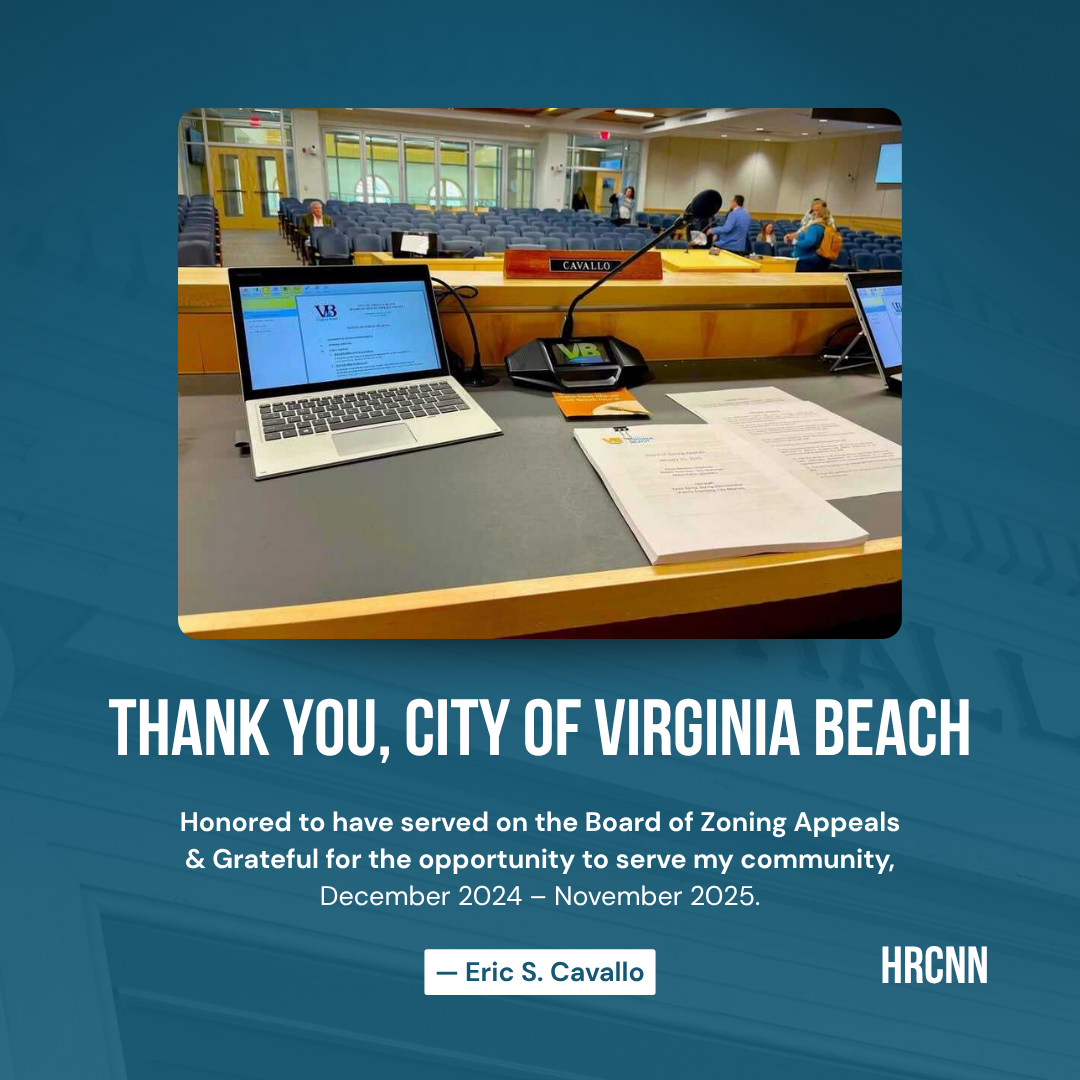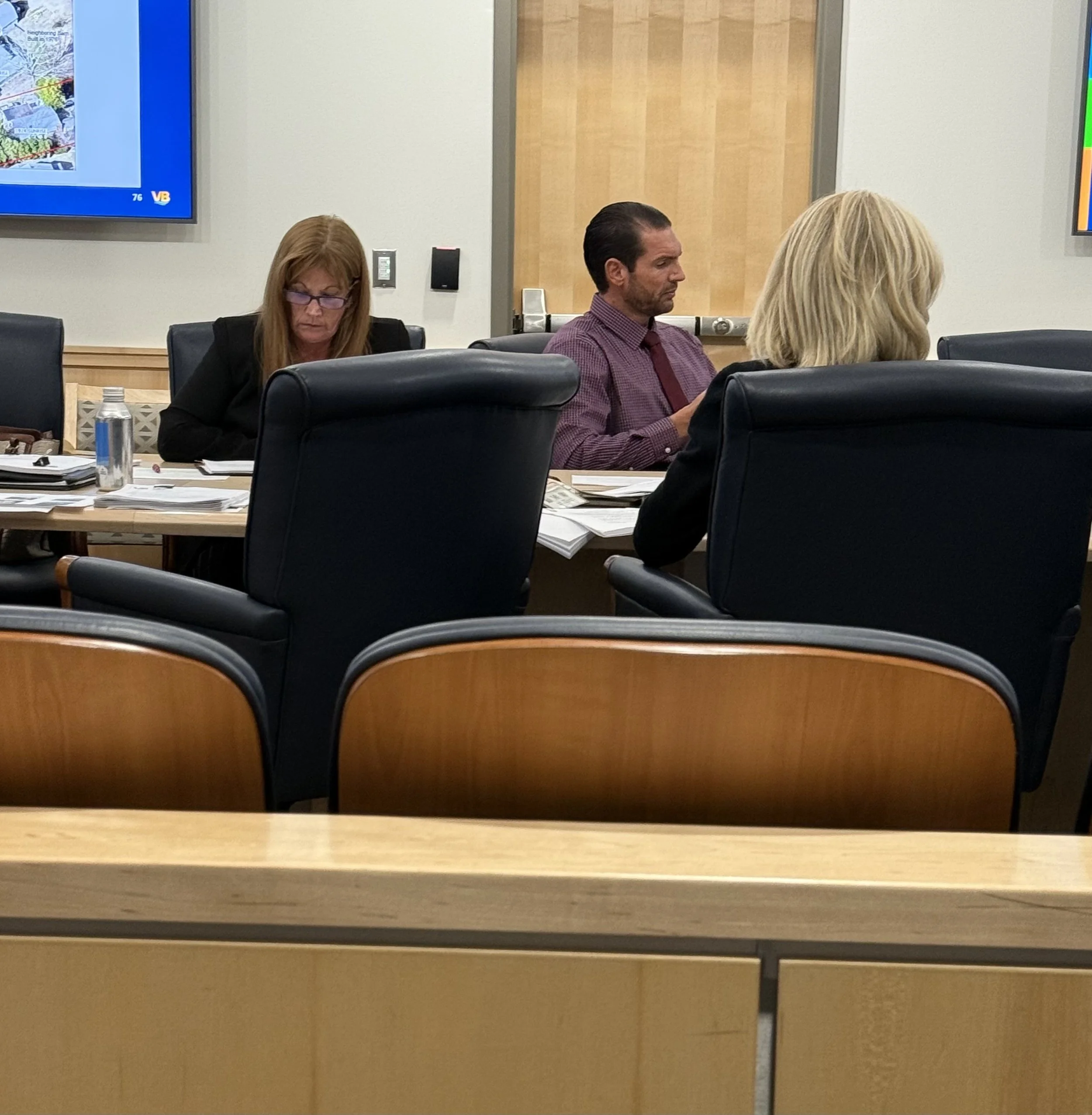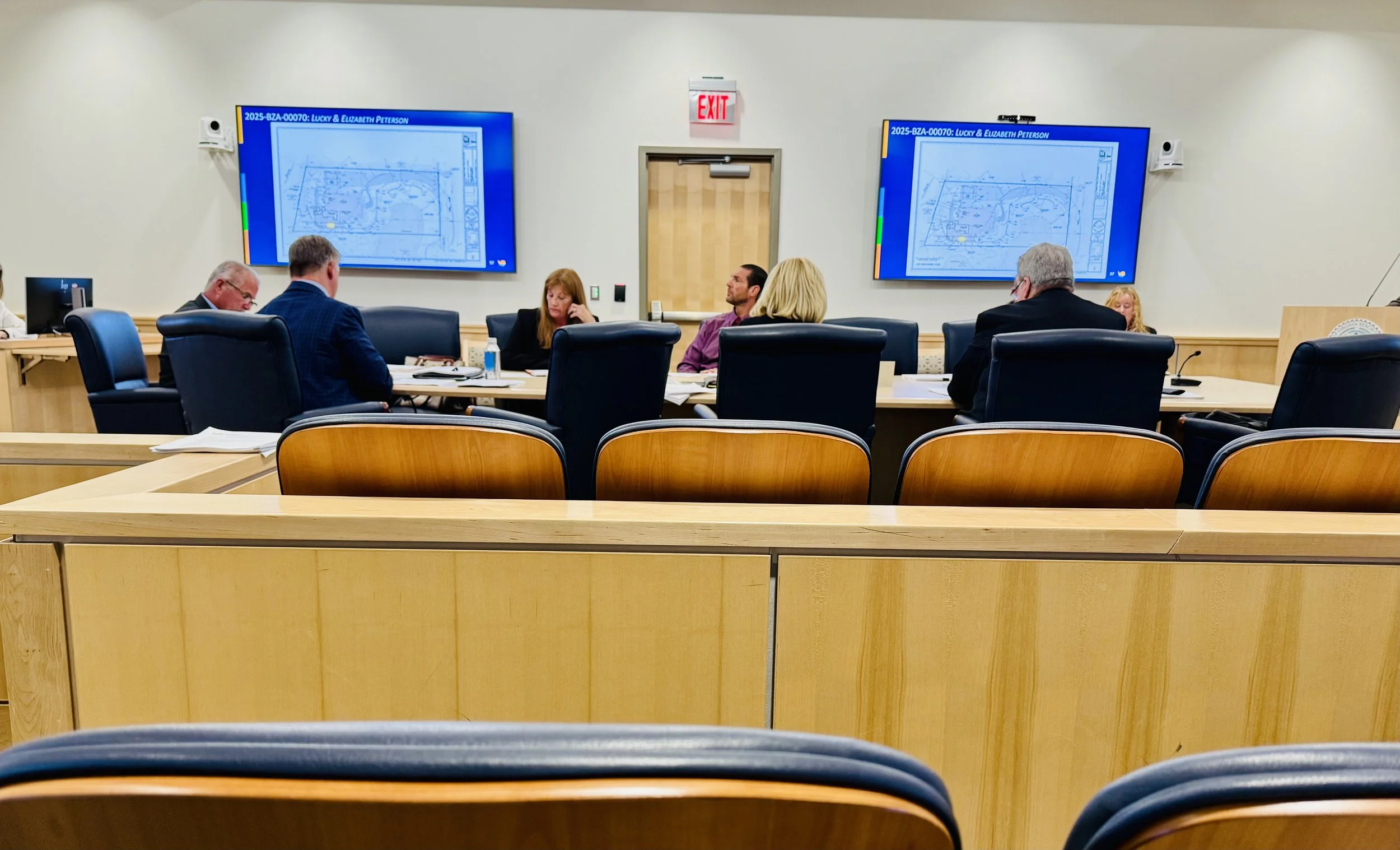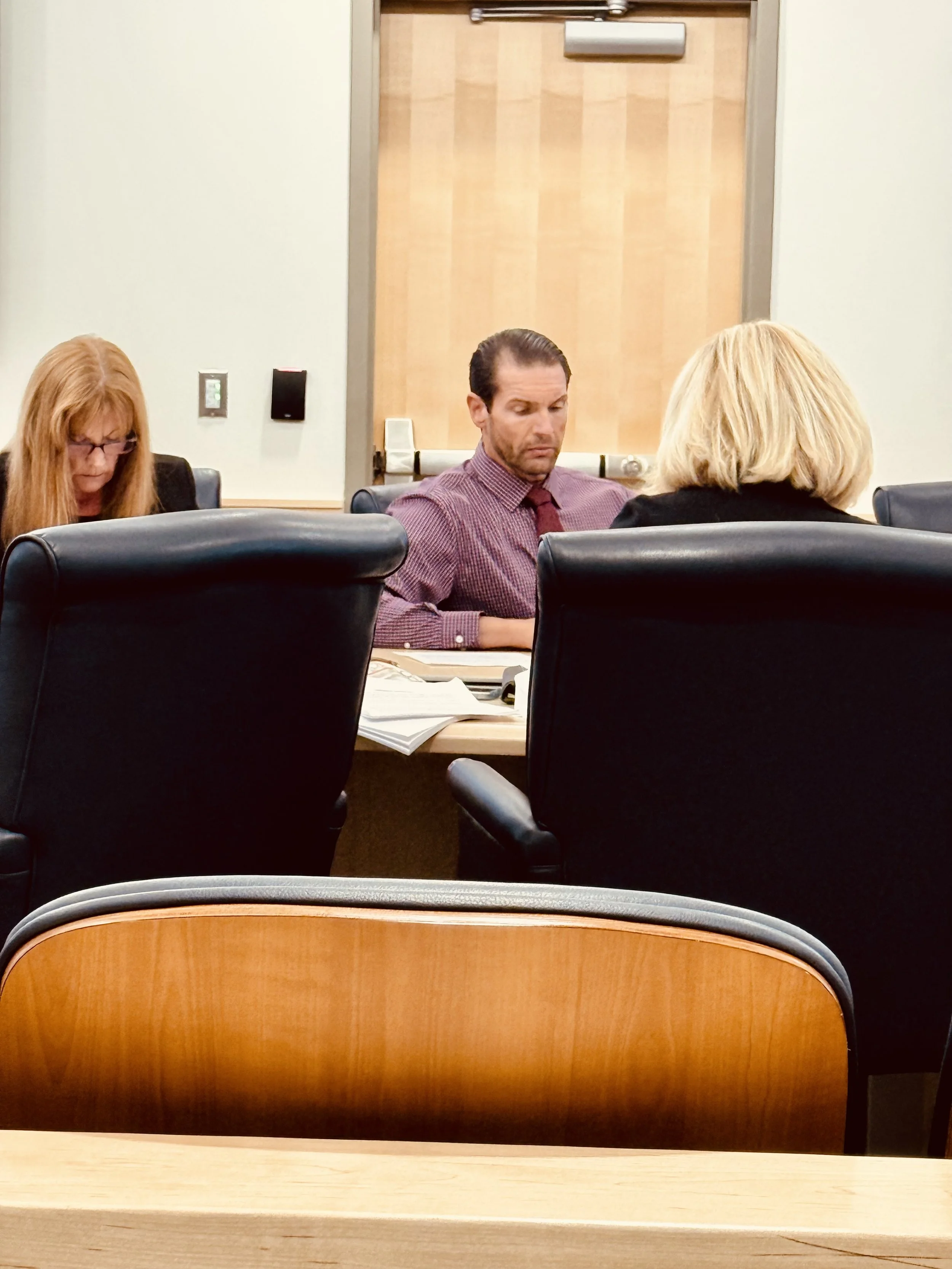By Eric S. Cavallo, Editor-in-Chief, Hampton Roads Construction News Network (HRCNN)
In December 2024, I was appointed by City Council to serve on the Virginia Beach Board of Zoning Appeals. Over the past year, it has been my privilege to contribute to a body entrusted with upholding the integrity of our city’s zoning ordinances and ensuring that land use decisions are made fairly, transparently, and in accordance with Virginia law.
The Board’s authority, established under Virginia Code §15.2-2309, includes hearing requests for variances, deciding appeals, and interpreting the zoning ordinance when questions arise. Each matter brought before us carried weight: a homeowner seeking reasonable use of their property, a business pursuing investment, or a neighborhood voicing concerns about community character and safety. No case was ever abstract—each represented people, places, and outcomes that would leave a lasting impact on Virginia Beach.
During my service, I came to appreciate how deeply zoning decisions shape the life of a coastal city. Waterfront properties, setbacks, accessory structures, and redevelopment proposals all underscored the delicate balance between growth, resilience, and preserving the qualities that make Virginia Beach unique. The process required not only technical understanding but also a steady commitment to fairness, consistency, and respect for the law.
As my term concludes, it is with both gratitude and bittersweetness. My service on the Board of Zoning Appeals comes to an end not by choice, but by necessity, as my family and I relocate to Chesapeake. While it is difficult to step away from a role that has been meaningful and rewarding, I am proud of the work accomplished during my tenure and humbled to have had the opportunity to serve.
I extend my sincere thanks to City Council for entrusting me with this appointment, to my fellow Board members for their professionalism, and to the citizens of Virginia Beach for their engagement in the public process. Though this chapter of service in Virginia Beach closes, my commitment to building safe, resilient, and well-planned communities across Hampton Roads continues into the next chapter of my civic and professional journey.
About Eric S. Cavallo
Eric S. Cavallo is the founder and chief executive officer of Earthly Infrastructure® Building and Infrastructure Development Inc., a Virginia Licensed Contractor with a specialty in Commercial Building, and a member of the International Code Council. From December 2024 to November 2025, he served on the Virginia Beach Board of Zoning Appeals, helping to review and decide zoning variance requests under Virginia Code §15.2-2309. Cavallo also serves as an advisor to the Virginia Department of Housing and Community Development, contributing to statewide stakeholder discussions on building code reform, including SB195 and the use of single-stair exits in R-2 occupancy structures.
About HRCNN
The Hampton Roads Construction News Network (HRCNN) is a regional platform dedicated to providing accurate, timely, and builder-informed coverage of construction, infrastructure, zoning, and development across Coastal Virginia. Free, funded, and focused, HRCNN delivers reporting and commentary that supports transparent decision-making, resilient infrastructure, and responsible growth in Hampton Roads.





